Go Wireless!
Wireless Ethernet Bridges:
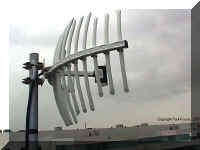 Wireless
Ethernet bridges operate in either license-exempt 2.4-2.5835 GHz radio bands or
in the 3.6 to 3.9 GHz licensed band. Their simple integration with your
existing network allows you to avoid the high costs of installing wire, paying
licensing fees, or being billed with on-going monthly line charges. Our
clients have saved enough in installation charges and on-going line fees to
quickly recoup their entire network set-up costs.
Wireless
Ethernet bridges operate in either license-exempt 2.4-2.5835 GHz radio bands or
in the 3.6 to 3.9 GHz licensed band. Their simple integration with your
existing network allows you to avoid the high costs of installing wire, paying
licensing fees, or being billed with on-going monthly line charges. Our
clients have saved enough in installation charges and on-going line fees to
quickly recoup their entire network set-up costs.
They can be used in
almost any line-of-sight environment to replace, extend or connect wired
Ethernet networks, and they are especially effective where wires are
unavailable, impractical or too costly to install or maintain.

How Does It Work?
Here is an example of two wireless bridges between a pair of buildings.
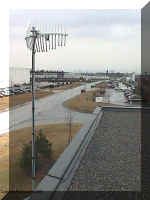
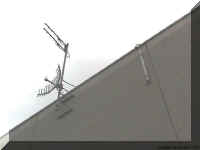 Two masts, each with a single antenna, are located on one building.
Two masts, each with a single antenna, are located on one building.
They
individually communicate with the pair on the single mast, located on the side of another
building, about 800 feet away.
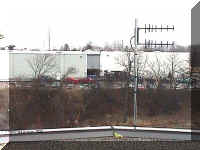
The white, parabolic antennas communicate LAN traffic.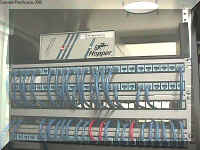 It gives the plant employees the flexibility to access their network computer
system while roaming throughout either building.
It gives the plant employees the flexibility to access their network computer
system while roaming throughout either building.
The coaxial cable enters the base radio pictured here on the
left. The radio then simply connects via Ethernet UTP patch cable to the
hub/switch stack. The units supports SNMP, so you can remotely monitor
their online status, in case disaster should strike a rooftop antenna.
The Intermec wireless barcoding system:
The external antennae allow
employees to use their hand-held barcode scanners in either building as if they were one.
The strength of the signal also allows incoming raw material to be scanned right
on the truck, in the parking lot.
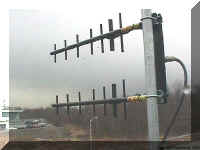
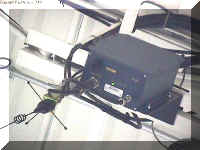
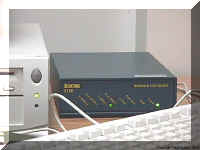
The coaxial cable from the external antenna can be connected to a base radio
or a repeater. In the above example, the repeater drives both the external
directional Yagi antennas and an internal omni-directional antenna
connected with a Y-splitter. The base radios (in the plants) are
wired to a network controller (in the computer room) with a shielded
network cable. This controller is then plugged into the serial port of a
computer.

What would happen if a lightning strike hit one of the masts, during an
thunder storm?
Would the huge surge of electrical energy travel through the antenna cable? It
may burn out the base radio, but surges may affect the hubs, router, or worse. .
. the
computer fileservers.
Scientific work has shown that the majority (60 to 80 percent) of the electrical energy
from the lightning strike travels down the mast. The mast itself should be grounded
via the shortest route to the earth.
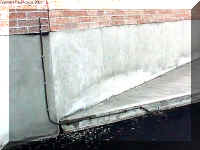 Thick
multistrand copper cable is clamped to the antenna mast at one end, and to a
six-foot copper spike hammered into the ground.
Thick
multistrand copper cable is clamped to the antenna mast at one end, and to a
six-foot copper spike hammered into the ground.
 A lightning arrestor is cut into the coaxial cable near to the point of entry
into the building. It is separately grounded to the main power ground.
A lightning arrestor is cut into the coaxial cable near to the point of entry
into the building. It is separately grounded to the main power ground.
This particular model can block multiple lighting strikes.

![]()